Ragdolls are known for their recognized traits and stunning appearances, but when it comes to standard colors, they are typically pointed cats.
This means their body is a lighter shade compared to their face. The officially recognized Ragdoll colors include seal, chocolate, blue, flame, lilac, and cream, but white is not on the list.
So, do pure white Ragdolls truly exist? The answer isn’t clear, and no one truly knows for sure. Some cats resemble Ragdolls and act like them, and certain breeders claim they are pure breeds.
However, some societies and breeders say otherwise, making this a topic of debate in the feline world.
The History and Rising Popularity of Ragdoll Cat All White
Table of Contents
- 1 Ragdoll Cat All White Coat Color Genetics
- 2 Do Pure White Ragdoll Cats Exist?
- 3 White Ragdoll Cat Price – How Much Do They Cost?
- 4 Type of White Ragdoll & Price Range
- 5 White Ragdoll with Blue Eyes – A Unique Look
- 6 Ragdoll White and Grey – A Beautiful Variation
- 7 White Ragdoll Cat for Adoption – Can You Rescue One?
- 8 White Ragdoll Kittens for Sale – What to Know Before Buying?
It’s difficult to pinpoint when the first white Ragdoll cat appeared in the breed’s history, but the story surrounding it is somewhat strange. There are multiple stories about the breed, and no one truly knows which one is true.
What is certain is that a woman named Ann Baker played a key role in creating this precious breed we adore today. Back in the 1960s, Ann was a breeder of Persian cats in Riverdale, California.
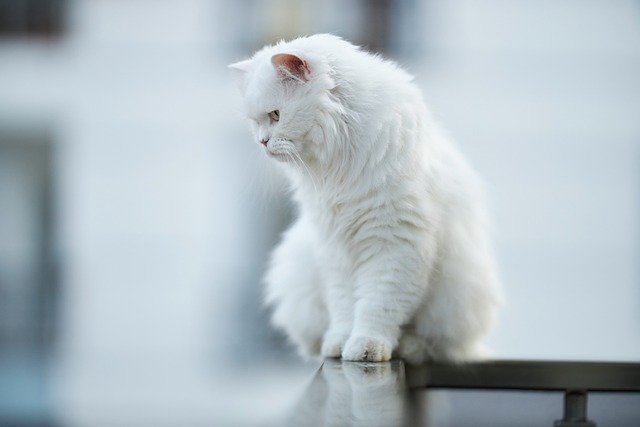
She had a cat named Josephine, a white Angora believed to be either a rescue in her care or part of a breeding program. Her offspring were reportedly borrowed for breeding, and their heritage includes the Birman, which helped produce the first Ragdoll kitties. Over the years, Ann selectively bred to create and enhance traits in the Ragdoll breed.
Ragdolls quickly became popular in society due to their beauty and unique habit of going limp like a ragdoll when being held. Families loved them, but white Ragdolls were often viewed as a myth or even fake by some breeders and societies.
However, the International Cat Association recently began accepting them as pure breeds, increasing their popularity. White blue-eyed Ragdolls make up less than 1% of the cat population, making them incredibly rare and often considered royal cats.
Their pure white coloring is the result of genetic levels of white, similar to how mitted and bicolor Ragdolls have varying degrees of white. This genetic trait can completely mask color, even though they are genetically pointed cats.
Ragdoll Cat All White Coat Color Genetics
Ragdoll cats have unique coat color genetics, which influence how their color develops over time. Below is a breakdown of how Ragdolls develop color points and why some remain white.
Coat Color Development
| Factor | Explanation |
| Temperature-Sensitive Genes | Ragdolls carry a temperature-sensitive gene, meaning cooler areas of the body (ears, face, paws, tail) develop darker color points, while warmer areas remain lighter. |
| Born White | All Ragdoll kittens are born completely white, and their color starts to develop within the first 1-2 weeks. |
| Pointed Pattern | The most common Ragdoll coat pattern is pointed, where the body is lighter, and the extremities (face, ears, paws, tail) are darker. |
| Color Development Over Time | Ragdolls take up to 3-4 years to fully develop their final coat color. |
| Recognized Colors | Officially recognized colors include seal, chocolate, blue, flame, lilac, and cream. White is not a standard color. |
| White Ragdolls – Genetic Mutation? | Some Ragdolls appear all white due to a high level of white spotting genes, which mask their true color. |
| Albino vs. White Ragdoll | True albino cats lack pigment entirely, while white Ragdolls may still have underlying color genetics. |
| Accepted White Ragdolls | Some registries, like The International Cat Association (TICA), accept white Ragdolls as purebred, while others do not. |
Do Pure White Ragdoll Cats Exist?
Ragdoll cats are beloved for their soft, plush coats and affectionate nature. While most Ragdolls develop striking color points, some owners wonder if pure white Ragdoll cats truly exist.
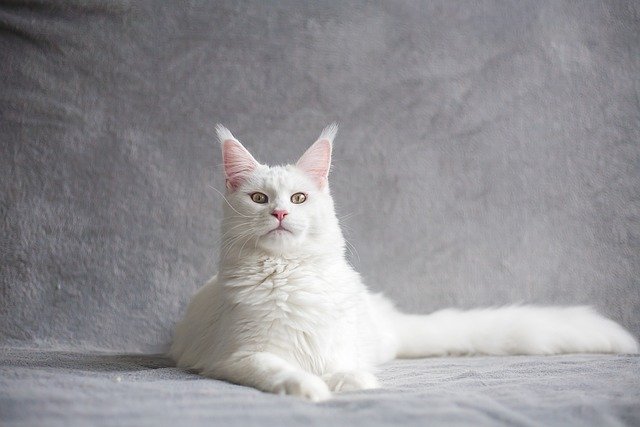
Understanding their genetics, coat variations, and official breed standards is key to answering this question.
Understanding Ragdoll Coat Colors
The Ragdoll is a unique breed known for its soft fur and affectionate nature. Interestingly, all Ragdoll kittens are born without coloration, making them appear white at first.
However, as they age, their pigment develops, and by around 2 years old, they reach their true coloration.
Their coat colors follow specific breed standards, with shades like cream, blue, seal, chocolate, and lilac. Despite the huge controversy surrounding their colors, these cats remain a popular choice among families.
Are There True White Ragdoll Cats?
Some Ragdoll cats appear pure white, leading to debates among breeders and societies. The Cat Fanciers Association (CFA), which formally recognized the Ragdoll breed in 1966, does not recognize white Ragdolls as purebred.
However, the International Cat Association has recently started accepting white as part of the breed standard, increasing their popularity.
Despite this, some believe these kitties are a myth or even fake Ragdolls.
Difference Between Albino and White Ragdolls
There is a clear genetic distinction between albino cats and white Ragdolls. True albino cats lack pigment, giving them pale blue or pink eyes.
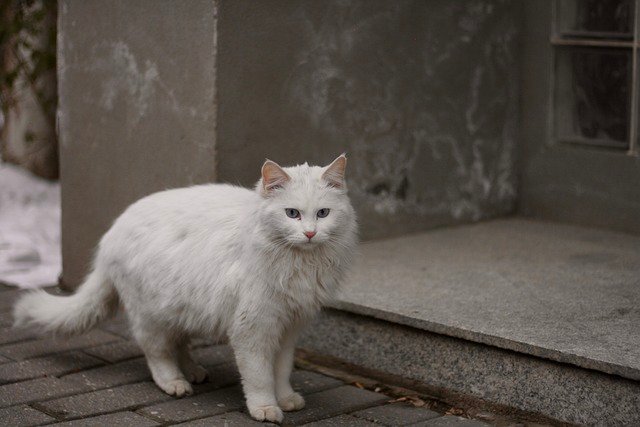
In contrast, white Ragdolls may have a body that looks ivory but still follow the pointed color pattern at a genetic level.
Some people confuse them with cream Ragdolls, which are among the rarest, with only 3% of Ragdoll owners lucky enough to have one. Their beauty and habit of going limp when held make them a favorite among cat lovers.
White Ragdoll Cat Price – How Much Do They Cost?
White Ragdoll cats are highly popular due to their beauty, loving temperament, and family-oriented nature. They are excellent pets that enjoy spending time with their families, making them the perfect kitty addition to any home.
However, there is controversy surrounding white Ragdolls, as some breeders and societies deny their coloration as real.
While certain cat associations have opened their arms to the possibility of solid-colored Ragdolls, others do not accept them as pure breeds.
Despite this, their popularity has continued to grow, with the International Cat Association accepting them as part of the Ragdoll breed standard.
Type of White Ragdoll & Price Range
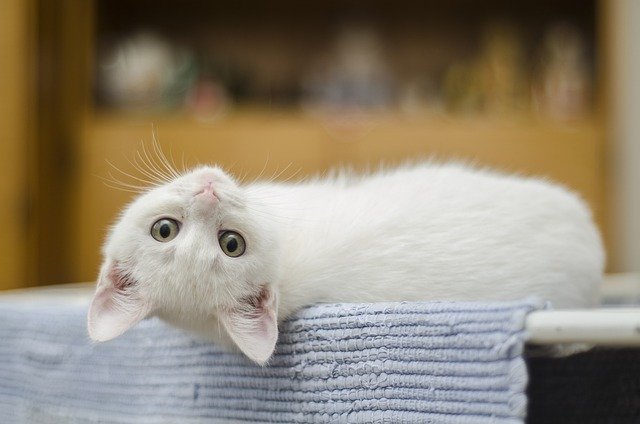
| Type of White Ragdoll | Price Range |
| Pet-Quality White Ragdoll | $800 – $1,500 |
| Show-Quality White Ragdoll | $2,000 – $5,000 |
| Rare White Ragdoll Variants | $3,000+ |
| Adoption from Rescues | $100 – $500 |
White Ragdolls are considered rare, especially blue-eyed white Ragdolls, which make up only 1% of the cat population.
These royal cats often have pure white coloring due to their genetic makeup, but they still carry the pointed gene seen in traditional Ragdolls. Their coloration can fall into different categories, such as mitted, bicolor, or greater mask level, depending on their genetic traits.
Factors Affecting Price
Rarity of White Coat
The white color is rare in Ragdolls, making them more expensive than standard pointed Ragdolls. Traditional recognized colors include seal, chocolate, blue, flame, lilac, and cream, but solid white Ragdolls are still debated among breeders and societies.
Breeder Reputation & Certifications
A breeder’s reputation plays a huge role in pricing. If a breeder has CFA or TICA certification, their cats are typically more expensive.
These breeders ensure that their Ragdolls meet recognized traits and appearances, following breed standards set by major cat associations.
Health Screenings & Genetics
Responsible breeders charge higher prices because they genetically test their Ragdoll kittens to prevent health issues.
This is important because the Ragdoll breed was carefully developed over the years through selective breeding.
Ann Baker, the woman behind the breed, started her breeding program in the 1960s with her Persian and Angora rescue cat, Josephine. Over time, her program borrowed genetic traits from Birman cats to create the modern Ragdoll we know today.
Whether you’re looking for a pet-quality Ragdoll or a rare variant, these kitties are a joy to own, providing intelligence, affection, and a gentle personality that makes them an ideal addition to any family.
White Ragdoll with Blue Eyes – A Unique Look

A white Ragdoll cat with striking blue eyes is one of the rarest and most sought-after felines. These royal cats stand out due to their pure white coloring, which results from their genetic makeup. However, not all white
Ragdolls have blue eyes—some may have odd-colored eyes or even green, gold, or aqua shades due to specific genetic traits.
Despite the ongoing controversy about their coloration, these beautiful kitties have gained popularity among cat lovers and families looking for an affectionate, family-oriented pet.
Most Ragdolls Naturally Have Striking Blue Eyes, But Do All White Ones?
Traditional Ragdolls are known for their deep blue eyes, a signature trait of the breed standard set by organizations like the Cat Fanciers Association (CFA) and the International Cat Association (TICA).
However, white Ragdolls are a different story. Unlike their color-pointed relatives, they may not always inherit this eye color, as their genetic structure influences their eye pigmentation.
The first white Ragdoll cat traces back to Josephine, the mother of the breed, whose offspring exhibited various coat colors and eye shades.
Over time, selective breeding programs aimed to maintain the blue-eyed trait, but some white Ragdolls still develop different eye colors due to their unique genetic history.
Why Some White Ragdolls Have Different Eye Colors – Understanding the Genetics
A white Ragdoll’s eye color is determined by genetics, particularly the dominant white (W) gene. This gene is responsible for the absence of pigmentation, which gives them their pure white coats. However, the same gene can sometimes cause different eye colors.

Some white Ragdolls are odd-eyed, meaning they have one blue eye and one gold or green eye—a condition known as heterochromia.
Others may inherit green, aqua, or amber eyes, making them distinct from the blue-eyed standard Ragdoll. Although some breeders and societies argue that blue eyes define a true Ragdoll, the International Cat Association has accepted white Ragdolls with varied eye colors, making them officially recognized within the breed standard.
Blue-Eyed White Ragdoll Kittens for Sale – Where to Find One?
Finding a blue-eyed white Ragdoll kitten can be challenging due to their rarity. Only about 1% of the cat population consists of pure white Ragdolls with blue eyes, making them highly desirable.
If you’re searching for one, consider reputable breeders with CFA or TICA certification, as they follow strict breeding programs to maintain healthy genetics.
Another option is to check rescue centers or Ragdoll-specific adoption groups, as some rare kittens may become available for adoption.
Whether you choose to buy from a breeder or adopt, a white Ragdoll with stunning blue eyes will undoubtedly be a perfect addition to any family—a pet that combines beauty, intelligence, and a gentle personality.
Ragdoll White and Grey – A Beautiful Variation
Ragdoll cats are well-known for their striking appearance, affectionate temperament, and family-friendly nature.
Among the various color patterns, white and grey Ragdolls stand out as a stunning and somewhat rare variation.
While traditional Ragdolls are recognized in seal, chocolate, blue, lilac, cream, and flame colors, the existence of white and grey Ragdolls sparks curiosity among cat enthusiasts.
What is a White and Grey Ragdoll?
A white and grey Ragdoll cat is a variation where the coat features a combination of these two shades. Since Ragdolls are a pointed breed, their body color is typically lighter than their facial markings.
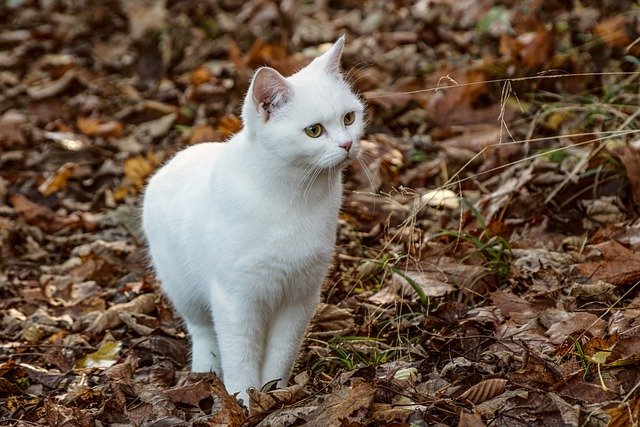
Some white and grey Ragdolls may have distinct patterns, while others display a softer blend of hues. Their coat can range from solid to bi-color or even mitted patterns.
Despite some controversy regarding the acceptance of solid-colored Ragdolls, many breeders and cat associations have embraced these variations due to their undeniable beauty and excellent temperament.
The International Cat Association (TICA) is among the organizations that have opened their arms to the possibility of solid-colored Ragdolls, while others still debate their recognition.
Popular Patterns: Bicolor, Mitted, and Lynx Variations
White and grey Ragdolls come in several beautiful coat patterns:
- Bicolor – These Ragdolls have a distinctive white “V” shape on their face, white chest and belly, and grey markings on their ears, back, and tail.
- Mitted – This pattern includes white paws that resemble mittens, along with a white chin and belly, while the rest of the coat remains grey.
- Lynx – Lynx Ragdolls exhibit faint striping, giving them a wild and elegant look. The white and grey variation in this pattern often features soft tabby-like markings on the face and legs.
Each of these patterns enhances the already remarkable appearance of Ragdolls, making them a perfect addition to any cat-loving home.
How Coat Colors Change Over Time – White Kittens vs. Adult Coloration
One fascinating trait of Ragdolls is their coat transformation as they mature. Ragdoll kittens are often born pure white and gradually develop their final coloration over time.
Also, the grey markings typically start appearing around 8 to 12 weeks of age and continue to darken as the cat grows. By the time they reach full maturity, usually around two to three years of age, their coat displays its full color and pattern.
This color change is influenced by temperature-sensitive genes that determine the development of their markings. Since Ragdolls have a genetic makeup linked to albinism, their fur darkens in cooler areas of the body, resulting in their signature pointed appearance.
A Stunning and Loving Companion
White and grey Ragdolls are not just admired for their breathtaking beauty; they also possess an even-tempered, loving, and family-oriented nature.
They enjoy spending time with their families, can be taught tricks due to their intelligence, and are gentle with children and other pets. Their affectionate and playful demeanor makes them a perfect kitty for any home.
Although controversy exists regarding the recognition of certain colorations, there is no denying the amazing beauty and temperament of these cats.
Whether accepted by all breeders or not, white and grey Ragdolls continue to gain popularity and are warmly welcomed into homes worldwide.
White Ragdoll Cat for Adoption – Can You Rescue One?
White Ragdoll cats are rare, stunning, and highly sought after for their affectionate nature and striking appearance.
While many people purchase their Ragdolls from breeders, adoption is an excellent alternative that offers a loving home to a cat in need.
If you’re considering adopting a white Ragdoll, there are several factors to explore, including where to find one, the pros and cons of adoption versus buying from a breeder, and what to expect when welcoming an adult Ragdoll into your home.
Rescue Centers and Organizations That Specialize in Ragdolls
While purebred Ragdolls, especially white ones, are less common in shelters, several rescue organizations specialize in rehoming Ragdoll cats.
These rescues often take in Ragdolls from owners who can no longer care for them or from less-than-ideal situations, giving them a second chance at a loving home.
Some reputable Ragdoll rescue organizations include:
- Ragdoll Rescue USA & Canada – A network dedicated to rehoming Ragdolls across North America.
- Ragdoll Rescue UK – A well-known organization that helps Ragdolls find new homes in the United Kingdom.
- Petfinder.com & AdoptAPet.com – Online databases listing Ragdolls and other cats available for adoption from various shelters.
- Local Animal Shelters & Breed-Specific Rescues – Many general rescues and foster groups occasionally have Ragdoll cats available for adoption.
Since white Ragdoll cats are rare, it may take time and patience to find one in a rescue. However, signing up for alerts from adoption websites and working closely with Ragdoll rescue groups can increase your chances of finding the perfect feline companion.
Pros & Cons of Adoption vs. Buying from a Breeder
Before deciding whether to adopt or buy a white Ragdoll cat, it’s essential to weigh the benefits and drawbacks of each option.
Pros of Adoption:
✅ Lower Cost – Adoption fees are significantly lower than the price of buying from a breeder, usually covering vaccinations, spaying/neutering, and microchipping.
✅ Saving a Life – Adopting a Ragdoll gives a cat in need a second chance at a loving home.
✅ Health Screening – Many rescues provide veterinary care before adoption, ensuring the cat is healthy.
Cons of Adoption:
❌ Limited Availability – White Ragdolls are rare, making it challenging to find one in a rescue.
❌ Unknown History – Some rescue cats may have past trauma or health issues that require extra care and patience.
❌ Adult Cats Only – Finding a white Ragdoll kitten in a rescue is extremely rare, so most available cats will be adults.
Pros of Buying from a Breeder:
✅ Guaranteed Pedigree – Reputable breeders provide lineage and genetic health testing.
✅ Kitten Availability – If you want a white Ragdoll kitten, buying from a breeder is the most reliable option.
✅ Predictable Temperament – Since breeders socialize their kittens from birth, you’ll have a better idea of their behavior.
Cons of Buying from a Breeder:
❌ High Cost – White Ragdoll kittens can be expensive, often ranging from $1,500 to $3,000.
❌ Risk of Unethical Breeders – Some breeders prioritize profit over the cat’s health, making research crucial.
❌ Long Waitlists – Due to their rarity, white Ragdolls from reputable breeders may have long waiting periods.
What to Expect When Adopting an Adult White Ragdoll
Adopting an adult white Ragdoll comes with unique advantages and considerations. Unlike kittens, adult cats have fully developed personalities, making it easier to find a cat that matches your lifestyle.
Here’s what you can expect:
- Gentle and Loving Nature – Ragdolls are known for their affectionate and family-oriented temperament. Most adult Ragdolls adjust well to their new home with patience and love.
- Time to Adapt – While Ragdolls are friendly, an adopted adult cat may take a few weeks to settle into a new environment. Providing a quiet, safe space helps with the transition.
- Established Grooming Needs – White Ragdolls require regular grooming to keep their coat clean and free of tangles. If your cat was neglected in the past, it might take time to restore coat health.
- Compatibility with Other Pets – Ragdolls generally get along well with other cats and even dogs. However, introducing an adopted cat slowly to other pets is crucial for a smooth adjustment.
Adopting a white Ragdoll cat is a rewarding experience that allows you to give a loving home to a cat in need. While finding a white Ragdoll for adoption may take time, the effort is well worth it for those willing to wait.
Whether you adopt or buy, Ragdolls are excellent pets that bring joy, companionship, and beauty to any family
White Ragdoll Kittens for Sale – What to Know Before Buying?
White Ragdoll kittens are rare, stunning, and highly sought after due to their striking blue eyes, soft coats, and gentle temperament.
If you’re considering bringing one into your home, it’s essential to do thorough research before making a purchase.
From finding reputable breeders to ensuring proper health checks and understanding deposit requirements, here’s everything you need to know before buying a white Ragdoll kitten.
Finding Reputable Breeders – Avoiding Scams and Unethical Sellers
The demand for white Ragdoll kittens has led to an increase in unethical breeders and scams. Many backyard breeders and kitten mills prioritize profit over the well-being of the cats, leading to health issues and poor breeding conditions.
To avoid these pitfalls, consider the following tips when selecting a breeder:
✅ Check for TICA or CFA Registration – Reputable breeders are registered with organizations like The International Cat Association (TICA) or the Cat Fanciers’ Association (CFA), ensuring ethical breeding practices.
✅ Visit the Cattery – If possible, visit the breeder’s location to see how the kittens are raised. A clean, loving environment indicates a responsible breeder.
✅ Ask for References – Reputable breeders should provide references from past buyers. Online reviews and recommendations can also help assess their credibility.
✅ Avoid Unrealistically Low Prices – White Ragdoll kittens typically cost between $1,500 to $3,000. Be wary of breeders offering prices that seem too good to be true.
✅ No Kittens Before 12 Weeks – Ethical breeders keep kittens with their mother for at least 12 weeks to ensure proper socialization and health.
🚨 Red Flags to Watch For:
❌ Breeders unwilling to show their facility or provide kitten health records.
❌ Sellers pressuring you to make an immediate deposit without a contract.
❌ Kittens listed as “purebred” without any pedigree or registration proof.
❌ Ads on general marketplaces (e.g., Craigslist, Facebook Marketplace) with no breeder credentials.
Health Checks and Vaccination Proof
Before bringing home a white Ragdoll kitten, ensure the breeder provides proper health documentation. A responsible breeder will:
✔ Provide a Health Guarantee – Most reputable breeders offer a health guarantee covering genetic conditions for at least one year.
✔ Perform Veterinary Health Checks – Kittens should be examined by a licensed vet before adoption.
✔ Ensure Vaccinations Are Up to Date – Kittens should receive at least their first two rounds of core vaccinations before going to their new home. Ask for a vaccination record that includes:
- Feline panleukopenia (FPV)
- Feline calicivirus (FCV)
- Feline herpesvirus (FHV-1)
✔ Screen for Common Health Issues – Ragdolls are prone to hypertrophic cardiomyopathy (HCM), a genetic heart condition. Ethical breeders screen their breeding cats for HCM to reduce the risk.
💡 Tip: Request a copy of the kitten’s health record and verify it with the veterinarian listed on the document before finalizing the purchase.
Deposit Requirements & Buying Tips
Most breeders require a non-refundable deposit to secure a white Ragdoll kitten. This is standard practice, but you should proceed with caution and ensure you fully understand the breeder’s terms.
📌 Typical Deposit Requirements:
- Deposit Amount: Usually $200–$500, depending on the breeder.
- Payment Methods: Many breeders accept PayPal, bank transfers, or checks but avoid breeders insisting on cash-only transactions.
- Refund Policy: Deposits are often non-refundable, but some breeders allow you to transfer the deposit to a future litter if needed.
📌 Buying Tips for a Smooth Experience:
✔ Read the Purchase Agreement Carefully – Ensure it includes health guarantees, return policies, and spay/neuter agreements.
✔ Clarify What’s Included – Some breeders provide starter kits, microchipping, and early socialization training.
✔ Prepare for Travel Costs – If the breeder is out of state, consider transportation fees or flying to pick up your kitten.
✔ Ensure the Kitten is Fully Weaned – Kittens should be eating solid food and fully weaned from their mother before adoption.
Buying a white Ragdoll kitten is an exciting journey, but it’s crucial to take the right steps to ensure a happy and healthy pet.
Always work with a reputable breeder, verify health checks, and understand deposit requirements before making a commitment.
With careful research and preparation, your new Ragdoll will be a loving, family-oriented companion for years to come!
Final Thoughts
Bringing home a white Ragdoll kitten is a rewarding experience, but finding a healthy, well-bred kitten requires careful research. Always choose a reputable breeder, verify health records, and understand deposit policies before making a purchase.
🐾 Ready to welcome a white Ragdoll into your home? Start by researching ethical breeders or checking adoption centers for available kittens. A little patience and diligence will lead you to the perfect feline companion!
Frequently Asked Qustions
Can Ragdolls be fully white?
Yes, Ragdolls can be fully white, though they are rare. Unlike traditional pointed Ragdolls, some breeders produce solid white Ragdolls, which may or may not be accepted by certain cat associations.
What is the rarest color of Ragdoll cats?
The rarest color of Ragdoll cats is lilac or chocolate mink, followed by solid white and blue-eyed white Ragdolls, which make up only about 1% of the breed.
How much does a pure white Ragdoll cat cost?
A pure white Ragdoll cat typically costs between $1,500 and $3,000, depending on the breeder, lineage, and location. Rare variations, such as blue-eyed whites, maybe even more expensive.
Is it rare for a cat to be all white?
Yes, solid white cats are relatively rare, making up about 5% of the total cat population. In Ragdolls, fully white coats are even rarer due to their genetic background favoring pointed patterns.
Why is Ragdoll so expensive?
Ragdoll cats are expensive because of their selective breeding, stunning appearance, gentle temperament, and rarity. Ethical breeders also invest in health testing and proper care, which increases the cost.
What is the rarest white cat?
The rarest white cat is the Khao Manee, a naturally occurring Thai breed known for its all-white coat and striking blue, gold, or odd-colored eyes. White Ragdolls with blue eyes are also extremely rare.
What is the cutest cat breed?
The cutest cat breed is subjective, but Ragdolls are often considered one of the cutest due to their fluffy coats, deep blue eyes, and affectionate personality. Other contenders include Scottish Folds, Maine Coons, and Persians.
Are Ragdoll cats friendly?
Yes! Ragdoll cats are one of the most affectionate and friendly breeds. They are known for their even-tempered, loving nature and enjoy spending time with their families. Their gentle demeanor makes them excellent pets for children and other animals.

